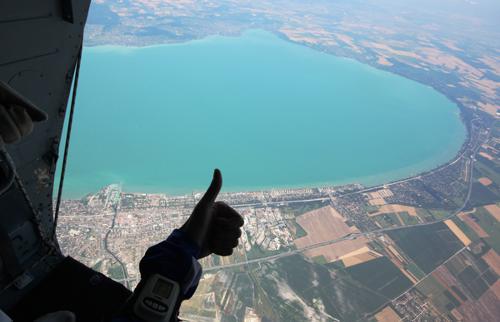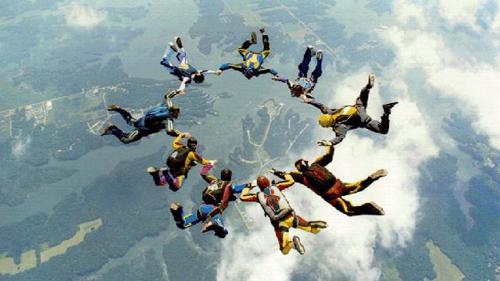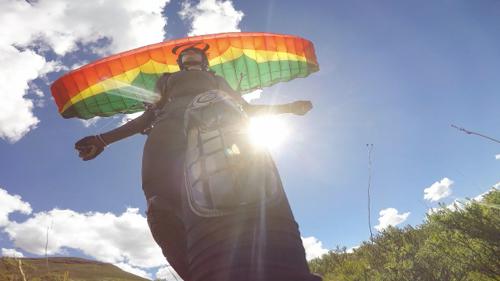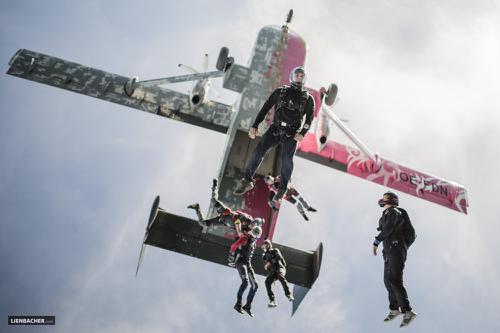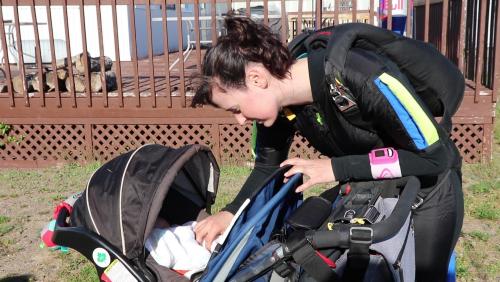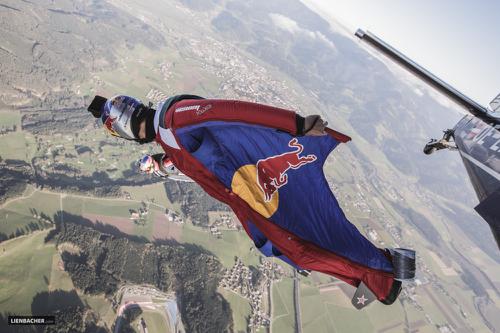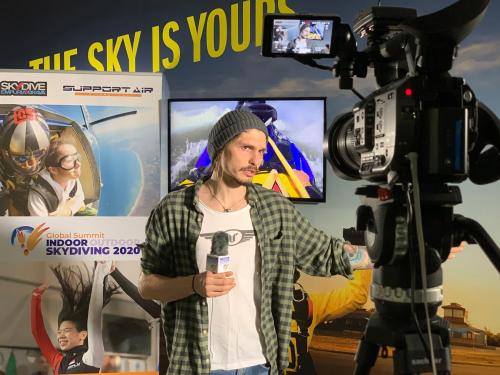Note: This article refers to skydiving and regulations in the United States. Refer to your country's civil aviation regulations for how to do this safely and legally in your country.
Disclaimer: The interpretations of the regulations referenced in this article are that of the authors.
Abbreviations and acronyms:
FAA: Federal Aviation Administration
CFR: Code of Federal Regulations (new designation)
FAR: Federal Aviation Regulations (old designation, still often used.)
FSDO: Flight Standards District Office
Important web pages and documents:
FAA web site: www.faa.gov
FAR 105, Parachute Operations. Can be found in Section 9 of the USPA
Skydiver's Information Manual (SIM)
Advisory Circular AC-105-2C, Sport Parachute Jumping. Can be found in Section 9 of the USPA Skydiver's Information Manual (SIM)
FAA Aeronautical Information Manual (AIM)
Why we need this information
It seems like every skydiver eventually wants to skydive into an area or event that is not at a regular dropzone or skydiving center at an airport. And no wonder, because it is fun, exciting, and a challenge, plus the scenery is sometimes much better. Imagine jumping at your family reunion into a huge field out on your uncle's farm in the country, and bringing along some of your skydiving buddies. You can't get much better than that.
But it does take a bit of preparation to do jumps like this safely and legally.
Unfortunately, nearly every time a skydiver asks about how to go about jumping somewhere other than their normal dropzone, they will get a number of answers that are incorrect or incomplete.
Why the confusion? Well, one reason is because the regulations associated with parachute jumping, FAR 105, changed in 2001. Many of us who have been skydiving a long time tend to remember the wording of FAR 105 before this change.
Jumping into the various type of airspace
For a detailed explanation of the airspace in the U.S, you can refer to official FAA airspace documents. There are also many tutorials on airspace, as pilots must learn about airspace classifications when learning to fly.
Related Section: FAR 105.25, Parachute operations in designated airspace
(a) No person may conduct a parachute operation, and no pilot in command of an aircraft may allow a parachute operation to be conducted from that aircraft—
(1) Over or within a restricted area or prohibited area unless the controlling agency of the area concerned has authorized that parachute operation;
(2) Within or into a Class A, B, C, D airspace area without, or in violation of the requirements of, an air traffic control authorization issued under this section;
(3) Except as provided in paragraph (c) and (d) of this section, within or into Class E or G airspace area unless the air traffic control facility having jurisdiction over the airspace at the first intended exit altitude is notified of the parachute operation no earlier than 24 hours before or no later than 1 hour before the parachute operation begins.
Paragraph 1 refers to two special types of airspace. It is unlikely that you will ever want or need to jump into that airspace unless you are with the military or with an exhibition skydiving team. It includes airspace around government and military buildings and installations.
Paragraph 2 refers to airspace into which you must get authorization to jump. It includes controlled airspace up to, and above altitudes of Flight Level 180 (18,000 feet MSL) and above, airports with operating control towers and/or radar approach control. It is possible that you might want to jump into such areas and airports.
Paragraph 3 refers to airspace that is the most likely type of airspace that you will encounter in rural areas or away from larger cities. "Giving notification of the parachute jump to Air Traffic Control" is the key information in this paragraph.
Advance "notification" to Air Traffic Control is not required when jumping at a location in Class A, B, C, or D Airspace because an advance “authorization” is required from the respective controlling agency.
The requirements for communication with Air Traffic Control during the jump are specified in FAR 105.13, Radio equipment and use requirements.
NOTAMs
A Notice to Airmen (NOTAM) is defined as "time-critical aeronautical information, which is of either a temporary nature or not sufficiently known in advance to permit publication on aeronautical charts or in other operational publications."
NOTAMs are filed (by phone or online) with an FAA "Flight Service Station". A Flight Service Station is an FAA briefing facility that provides information and services to pilots, for example, providing information related to flight planning. If a parachute jump is planned at a location where jumping is not normally done, filing a NOTAM for this activity will increase the safety of flight in the vicinity, because pilots that look up the NOTAMS during their flight planning will know about the planned jumping.
NOTAMS for parachute jumping are not normally required, but are a good idea, especially if you will be making a number of jumps on a particular day. Filing a NOTAM (with a Flight Service Station) is not sufficient for "giving notification" as described in FAR 105.25 paragraph 3. Notification needs to be made with the Air Traffic Control facility of jurisdiction, in most cases an Approach Control Facility or an Air Traffic Control Center. Although the phone numbers for these facilities can be found in various locations they can usually be obtained by contacting the Flight Service Station (FSS) at 800-WX-BRIEF (800-992-7433).
Here is where the confusion lies
The following is from the 1997 version of FAR 105. Sec. 105.23, Jumps in or into other airspace
(a) No person may make a parachute jump, and no pilot in command of an aircraft may allow a parachute jump to be made from that aircraft, in or into airspace unless the nearest FAA air traffic control facility or FAA flight service station was notified of that jump at least 1 hour before the jump is to be made, but not more than 24 hours before the jumping is to be completed, and the notice contained the information prescribed in Sec. 105.25(a).
Notice that "notification" is required, but that back then this notification could have been given to the nearest Air Traffic Control facility or to a Flight Service Station. Most of the time the notification was given to Flight Service, because pilots were used to contacting Flight Service while planning flights, and because contacting flight service by phone required only remembering a single nationwide phone number. Contacting the "nearest" air traffic control facility or the facility with "jurisdiction" required more research.
It is likely that back then, when notification was given to Flight Service about a parachute jump, that Flight Service personnel simply referred to the "notification" as a NOTAM, thereby perpetuating the misconception that a NOTAM was being filed, or even that it was required.
Jumping at another airport (where skydiving is not normally done)
Related regulation: FAR 105.23, Parachute operations over or onto airports
(b) For airports without an operating control tower, prior approval has been obtained from the management of the airport to conduct parachute operations over or on that airport.
There are additional requirements for jumping at an airport with a control tower, but paragraph (b) is the important part for when you want to make a jump at a small airport. You must have the approval of airport management. The FAA changed it from “manager” to “management” at some point in the past, presumably, to require permission from the Airport Board, City Authority, etc, to preclude a single “Manager” from giving permission where a larger body actually has control. Certainly, most private airports would only have a “manager” but proceed with caution when receiving approval from an “airport manager” at a public airport. For a number of reasons it would be much better to have written approval from the actual airport management.
Advance "notification" to Air Traffic Control is not required when jumping at an airport in Class A, B, C, or D Airspace because an advance “authorization” is required from the respective controlling agency.
The requirements for communication with Air Traffic Control during the jump are specified in FAR 105.13, Radio equipment and use requirements.
Demo (Exhibition) Jumps
Related regulation: FAR 105.21, Parachute operations over or into a congested area or an open-air assembly of persons
(a) No person may conduct a parachute operation, and no pilot in command of an aircraft may allow a parachute operation to be conducted from that aircraft, over or into a congested area of a city, town, or settlement, or an open-air assembly of persons unless a certificate of authorization for that parachute operation has been issued under this section.
What constitutes a "congested area" or an "open-air assembly"? Well, now we are getting into the interpretation of the regulations. Parts of Advisory Circular AC-105 were written specifically to cover these questions, but there is still a bit of interpretation to do, and the FAA may interpret a particular landing area differently that you might.
If you are jumping into an event like an air show, much of this documentation may already have been taken care of by the organizers, who may have simply added "skydivers" to the show's performers, but you would of course need to check with the organizers to be sure.
The FAA will usually require that a "Certificate of Waiver or Authorization" (COA) be obtained for most exhibition jumps of this type, which will require that a FAA Form 7711-2, "Application for Certificate of Waiver or Authorization", be submitted. This application may need to be submitted in advance of the planned parachute jump(s), because the FAA has ten days in which to respond to the request.
The Certification of Waiver or Authorization that you receive in response to your request will specify the conditions and limitations of the jump. These conditions may include the requirements that you give notification to Air Traffic Control of the jump and/or file a NOTAM. Either or both may be specified. Note: the completed, original COA is usually required to be on board the aircraft at the time of jump operations.
The requirements for communication with Air Traffic Control during the jump will exist as usual, plus, Air Traffic Control radio frequencies and other procedures may be specified in detail in the COA.
Note: This section of this article is not intended as a tutorial on organizing exhibition jumps, but is included mainly to compare the regulations associated with exhibition jumps with those of jumping into other areas. The best source of information about exhibition jumps would be a jumper that has organized exhibition jumps in your particular FAA region and has worked with that region's FSDO. The USPA Skydivers Information Manual (SIM) also contains a section "Exhibition Jumping and Rating".
Jumping at the family reunion
So the bottom line question becomes, “How do I legally jump into my family reunion on my uncle's farm out in the country?”
First of all, make sure that everyone jumping into the area is qualified and skilled enough to safely do so.
If you are a USPA member, please realize that you must still follow the BSR’s whether you are jumping at a USPA Group Member DZ, a non-Group Member DZ, or into your uncle’s farm. The BSR’s apply to each individual member regardless of where they make the jump, for example, the landing area requirements.
Make sure it is really “out in the country” (Class E or G airspace.) A pilot will help you determine that if you do not know how to read aviation maps. If it is close to a town you will need to determine whether it is really an “uncongested “ area, and this includes both the landing area on the farm, and the place you will be exiting. This means not over a subdivision and not over a school. The FAA will always err on the conservative side when determining if an area is congested, so you will want to be conservative too. Advisory Circular AC-105 includes guidance on this.
It is suggested that you not contact your local FSDO. Simply providing the required "notification" should be sufficient, assuming that the airspace is Class E or G.
Provide notification as required by FAR 105.25. This notification will usually be to a “Center” or Approach Control facility. As the facility may not be one that routinely receives such notification, it may be helpful to have a copy of FAR 105.25 in hand so that you can read it to the individual if they are not familiar with it. Always be polite but remember that you are giving a notification, not asking for permission.
Make sure the pilot knows to communicate as required by FAR 105.13.
Look for other air traffic as usual while spotting.
Jump and have fun!

